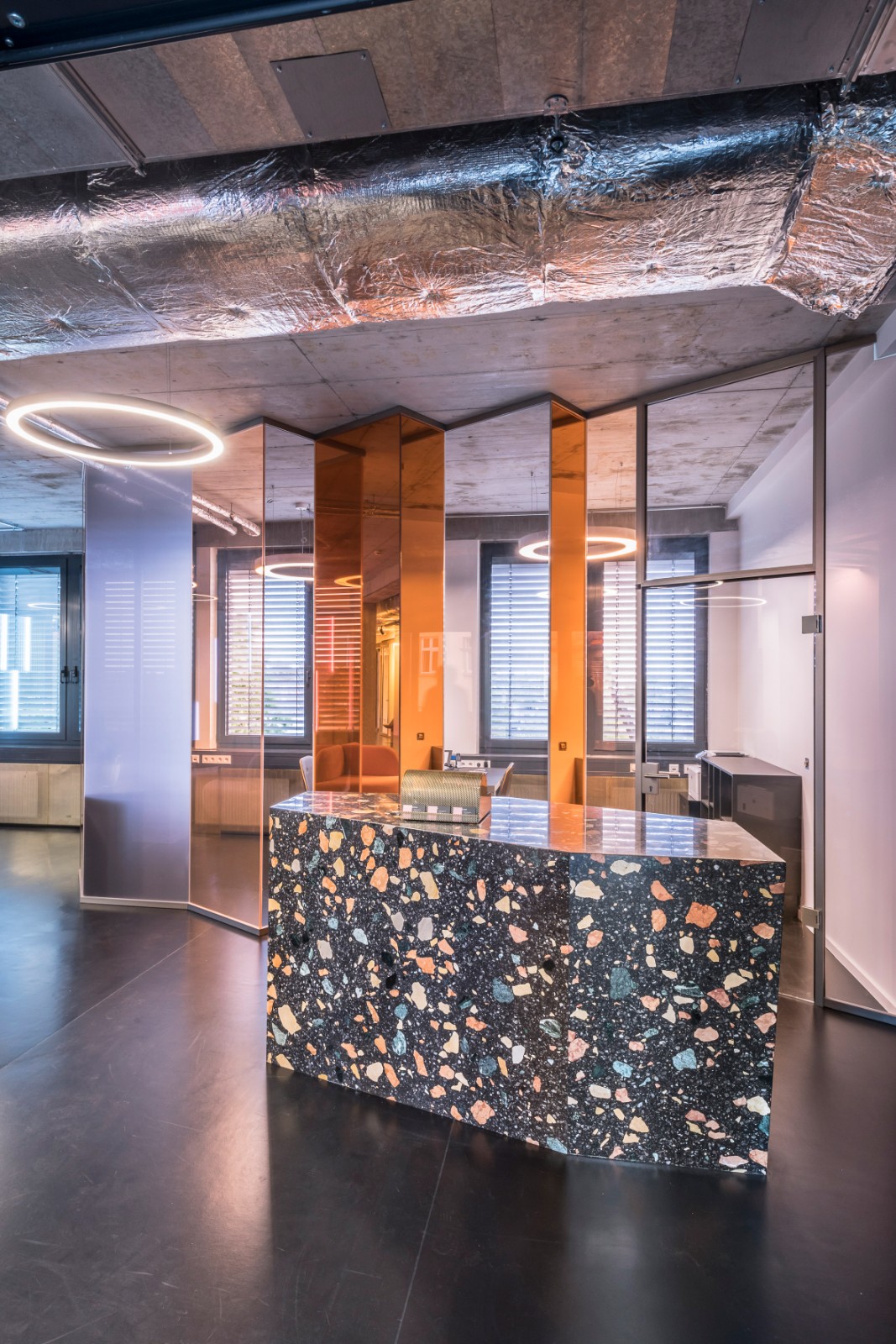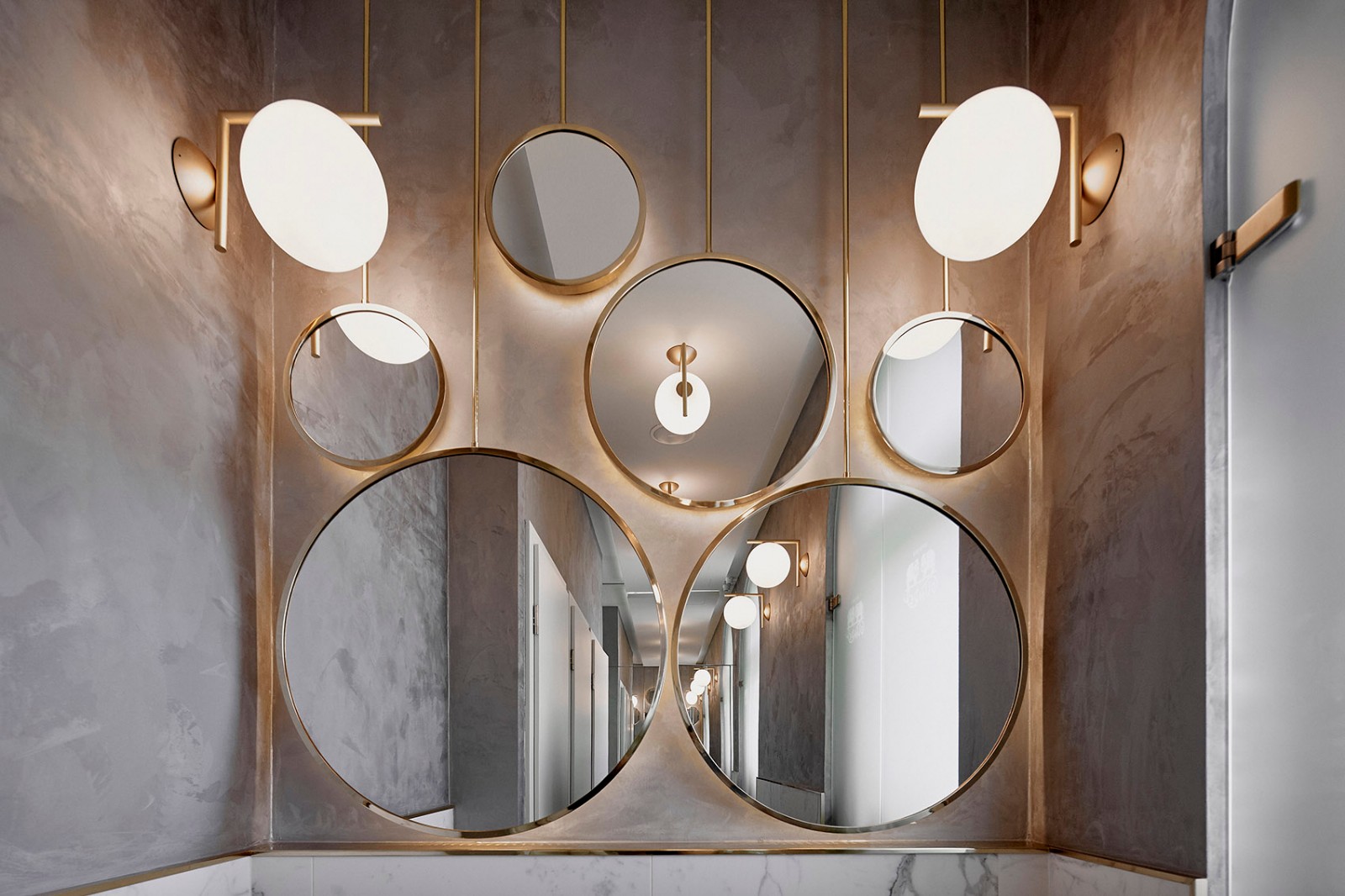SIEC MPH Architects
2014-06-19 01:00
可持续工业教育中心(SIEC)Tonsley TAFE项目是由南澳大利亚政府的目标发起的,目的是通过将阿德莱德前三菱主议会大楼(MAB)内的五个老化校园合并成一个现代化设施,降低TAFESA建筑和建筑贸易培训方案的运营成本。
The Sustainable Industries Education Centre (SIEC) Tonsley Tafe project was initiated by the Government of South Australia’s objective to reduce operating costs of the TafeSA’s Building and Construction Trade Training programs through the consolidation of five aging campuses into a single contemporary facility within the former Mitsubishi Main Assembly Building (MAB) at Tonsley Park, Adelaide.
这个新的设施是大规模适应性再利用的一个很好的例子。现有钢结构的90%得到保留,并创建了一个新的灵活和适应性强的教育设施,为TAFE学生活动的创新和展示提供了机会。
The new facility is an excellent example of adaptive re-use on a major scale. 90% of the existing steel structure has been retained and a new flexible and adaptable education facility created that provides opportunities for innovation and display of the Tafe student activities.
该设施的质量为与工业界和社区建立牢固联系提供了平台。由此产生的内部布局成功地为以学生为中心的学习提供了各种空间,并有效地利用了玻璃隔板,最大限度地向公众展示了TAFE活动,并提供了与现有钢结构的视觉和物理连接,以及确保在所有环境中实现采光机会。
The quality of the facility has provided the platform for the forging of strong links with industry and community. The resulting internal layout successfully provides a variety of spaces for student centred learning and the effective use of glazed partitioning throughout has maximized the showcasing of Tafe activities to the public, and provided visual and physical connections to the existing steel structure as well as ensuring daylighting opportunities are realized in all settings.
现有钢制品、裸露服务和最低限度的内部使用饰面的强烈表达支持了建筑物作为学生和更广泛的社区的示范学习工具的作用。
The strong expression of the existing steel work, exposed services and minimal internal applied finishes supports the buildings role as a demonstrator learning tool for the students and the wider community.
Key project objectives include:
-提高业务和经常性成本效率-提供灵活和适应性强的设施-加强与工业界和社区的接触-为创新和展示活动提供机会提供包容,个性化和以学生为中心的学习与空间之间的视觉和物理联系,使学生和讲师能够无缝和安全地移动整个建造形式,以支持基于跨行业的学习和吸收建筑工地项目-提供可持续的建造结果最大限度地自适应重用现有结构-一个范例可持续的设施
- Improved operational and recurrent cost efficiencies - Provide a flexible and adaptable facility - Improve engagement with industry and community - Provide opportunities for innovation and showcasing activities - Provide inclusive, personalised and student centred learning with visual and physical links between the spaces allowing the students and lecturers to move seamlessly and safely throughout - Built form to support cross trade based learning and assimilated construction site projects - Provide a sustainable built outcome - Maximise adaptive re-use of existing structure - An exemplar sustainable facility
28,000平方米的现有MAB围护结构被分配给TAFE,包括地下室和混凝土底层,三层桁架间隙,即6m,10.5m
28,000 sqm of the existing MAB envelope was allocated to Tafe comprising of basement and concrete ground floor with three truss clearance levels i.e. 6m, 10.5m & 15m. The space planning approach is more akin to the planning of a city block i.e. buildings within the MAB building, to provide legibility of way finding and define pedestrian and vehicle movement. The nominal 24x12m grid and south facing saw tooth roof with sky lights set the proportion and location of the internal buildings, allowing harmonious integration of old with new.
Main planning elements include:
-设有中央楼梯的小学内部“街道”及每一端已界定的公众项目,提供清晰的连接性,以配合MAB发展计划的其余部分-与“街”相交的中学“巷”,界定了通往教学和学习空间的主要通道;行政及工作坊-巩固与贸易工作坊毗邻的“小巷”外的知识区?员工办公室和会议室,在基础知识之上,对工作坊有意见?位于基础知识周边的贸易工作坊是:连接,以实现最大的灵活性,并允许未来的变化。车间循环网格是由交叉路口的绿色服务节点定义的-车间西侧的散装储存扩展了整个建筑的宽度,并使重型材料的安全处理和分配进入车间-垂直室外,水管和电气教学“建筑服务装置”展示在主要的“街道”上。
- Primary internal ‘street’ with central stair and defined public entries at each end provides legible connectivity with the remainder of the MAB development - Secondary ‘Lane’ that intersects with the ‘Street’ defines the main access to teaching and learning spaces, administration and workshops - Underpinning knowledge areas opening off the ‘lane’ adjacent to trade workshops - Staff offices and meeting rooms above underpinning knowledge have views over the workshops - Trade workshops located around the perimeter of the underpinning knowledge are connected to achieve maximum flexibility and allow for future change. The workshop circulation grid is defined by the green service nodes at intersections - Bulk storage to the west of the workshops extends the full width of the building and enables safe handling and distribution of heavy materials into workshops - Vertical outdoor, plumbing and electrical teaching ‘building services installation’ is showcased to the main ‘street’
主要的正面处理包括金属包层和翅片的‘浮黑带’,以大胆定义MAB建筑内的TAFE。在地面,一个连续的釉面为社区提供自然日光和展示车间活动。
The main facade treatment comprises a ‘floating black ribbon’ of metal cladding and fins to boldly define Tafe within the MAB building. At ground level a continuous glazed façade provides natural daylight and showcases workshop activities to the community.
玻璃处理还在内部继续进行教学、学习、办公室和支助空间的透明度和视觉联系,以加强学习经验。
The glazing treatment is also continued internally to teaching, learning, office and support spaces for transparency and visual connections to enhance the learning experience.
木材屏幕正面,其温暖的颜色清楚地定义了新的建筑物‘插入’的设施和对比的工业材料调色板的基础设施。
Timber screen facades with their warmth of colour clearly define the new buildings ‘inserted’ within the facility and contrast with the industrial material palette of the base facility.
原有的钢结构,包括油漆被保留下来,与无机硅酸锌漆形成对比,后者突出了结构加固所需的新钢结构和新的建筑元素。这支持了该设施的演示目标。
The original steel structure including paint finish is retained, contrasting with the inorganic zinc silicate finish that highlights the new steelwork required for structural stiffening and new building elements. This supports the demonstrator objective of this facility.
内部和应用的完成已被最小化。服务和结构元素的表达进一步增强了原始工业特征。色彩仅限于找路、服务和安全节点,提高了流通的可读性。
Internal and applied finishes have been minimised. The raw industrial character is further enhanced through the expression of services and structural elements. Colour is limited to way finding and service and safety nodes, enhancing circulation legibility.
Key sustainability initiatives are as follows:
-低VOC油漆、密封剂和粘合剂、地毯、地板和租赁配件-所有工程木制品都含有低或无甲醛
- Low VOC paints, sealants and adhesives, carpets, flooring, and tenancy fit out items - All engineered wood products contain low or no formaldehyde
-楼梯分布均匀,靠近建筑物入口和电梯,对自然日光开放,鼓励使用-街道和车道分隔建筑物,空出大地板,半透明的屋顶覆盖,确保自然日光渗透到较低的层安全自行车公园,储物柜和淋浴地点附近的公共交通系统鼓励使用公共交通。
- Stairs evenly distributed and located near the building entrance and lifts, are open to natural daylight, encouraging use - Streets and Lanes separate the buildings, voids break up large floor plates, and translucent roof sheeting over ensures natural daylight penetration into lower levels - Secure bicycle parks, lockers and showers - Site’s proximity to public transport systems encourages the use of public transport
Material Reduction Strategies
尽可能使用再生材料-地下室和虹吸式排水系统中的750 000升雨水池-最低限度天花板-90%的现有钢结构的再利用尽量减少使用表面处理.暴露服务.地板材料细木工及松软家具符合绿色之星可持续发展指引-模块化配合元素,使未来的灵活性和减少废物。
- Materials with recycled content are used wherever possible - 750,000 litre rainwater tanks in basement and syphonic drainage system - Minimal ceilings - 90% re-use of existing steel structure - Minimisation of applied finishes - Exposed Services - Flooring material, joinery and loose furniture complies with the Green Star sustainability guidelines - Modular fit out elements to enable future flexibility and waste reduction
-废物回收、储存和收集战略的空间分配-与回收公司制定的废物管理计划和互惠协议
- Spatial allocation for recycling waste storage and collection strategies - Waste management plan prepared and reciprocal agreement made with recycling company
-工程用地并非位于湿地或旧的生长森林附近,亦非绿化场地-街道内的环境美化增加了地盘的生态价值。
- Project site is not located near a wetland or old growth forest and is not a green field site - Landscaping within street increase ecological value of site
-将多个学科合并为一个地点,建立共享空间,减少设施排放和废物-TAFE时间表延长,以容纳更多班级,并减少额外校园建设和Revit模式的使用3D教学工具-建筑系统不需要安装特定的演示设备。
- Consolidation of multiple disciplines into one site created shared spaces and reduced the facilities emissions and waste - Tafe timetable extended to accommodate more classes and reduce the need for additional campuses - Building and the Revit model to be used as 3D teaching tool - Building systems negate the need to install specific demonstration plant & equipment
Architects MPH Architects
Location TAFE SA Tonsley Campus, 1284 South Road, Clovelly Park SA 5042, Australia
Architect in Charge Tony Materne
Project Leader Peter Hoare
Design Team Thomas Hansen, Vicki Jacobs, Carlo Pennino, Tonia Mudie, Sally Bostock, Matt Spinaze, Daniel Pike, James Jones, Maureen Fry, Diana Thompson
Photographs David Sievers
 举报
举报
别默默的看了,快登录帮我评论一下吧!:)
注册
登录
更多评论
相关文章
-

描边风设计中,最容易犯的8种问题分析
2018年走过了四分之一,LOGO设计趋势也清晰了LOGO设计
-

描边风设计中,最容易犯的8种问题分析
2018年走过了四分之一,LOGO设计趋势也清晰了LOGO设计
-

描边风设计中,最容易犯的8种问题分析
2018年走过了四分之一,LOGO设计趋势也清晰了LOGO设计






























































































